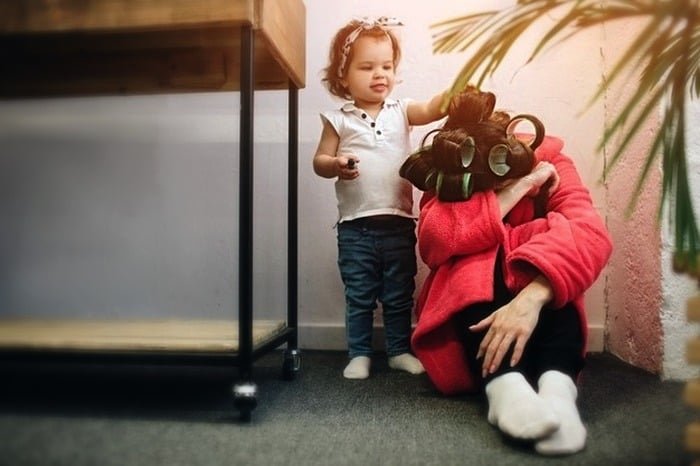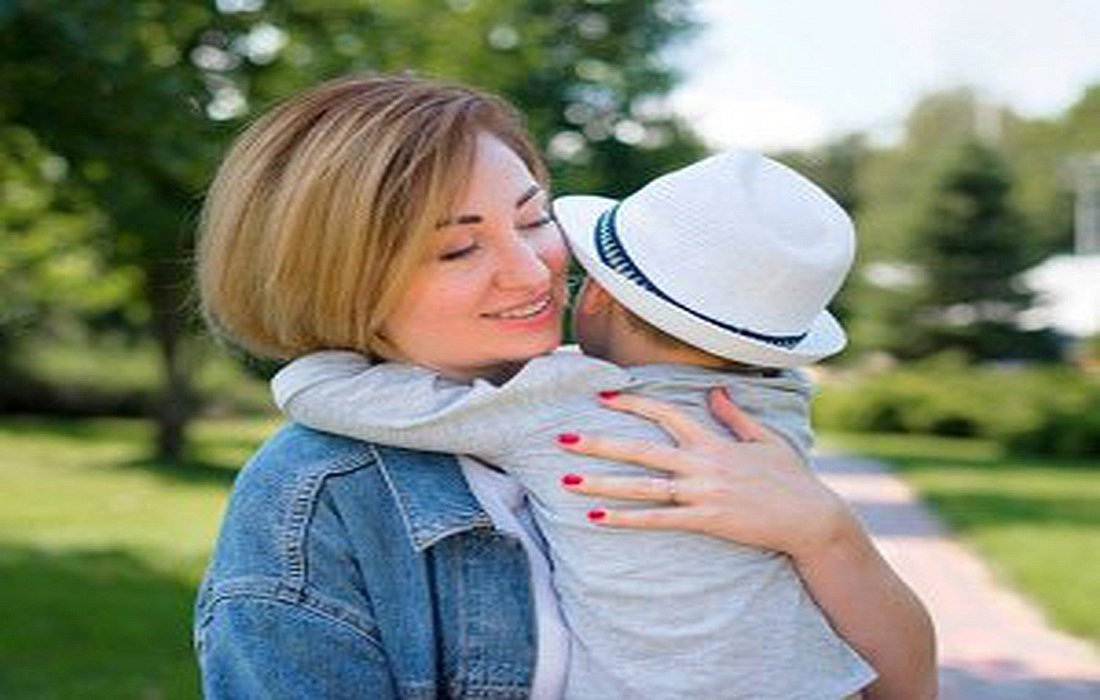What causes Reactive Attachment Disorder and how is it treated?
Infants connect with adults who provide them with stable and loving care. They recognize the adults who protect them and calm down when they feel tension.
In most cases, they develop a healthy attachment to their primary caregivers, such as parents, childcare providers, or perhaps grandparents with whom they are connected.
However, sometimes children struggle to form healthy relationships with an adult, which may result inReactive Attachment Disorder.It is a conditionthat impacts their mental health, affecting their ability to form loving and healthy relationships.If a child has very weak emotional and affective ties with their parents and feels withdrawn from their caregivers; if they rarely approach their parents when distressed and do not respond positively when held, these are some of the simplest signs of Reactive Attachment Disorder.
Causes of Reactive Attachment Disorder:
This section of mental healthin SelMagzprovides several examples of situations when a child might not be able to form a secure attachment to a primary caregiver:
The child’s mother is in prison:
While the mother is incarcerated, the child lives with various relatives and never stays long enough in the same home to develop a good connection with any adult.
A mother withdepression:As a result, she does not strive to care for her child.
When the child cries, she does not respond and shows few emotions.
A child taken away from their birthplace, parents, and home environment and placed in an orphanage:

The child lives in several different orphanages within a year and won’t have secure relationships with caregivers.
Both parents have serious substance abuse issues:
These parents, influenced by drugs or alcohol, are unable to provide adequate care for their child.
The child stays in an orphanage:
While there are various caregivers, when the child cries, they are rarely attended to. The child spends most of their time in a cabin.
A young mother doesn’t understand the basics of child development:
She lacks the knowledge to care for her child physically and emotionally. The child does not engage with the mother because she does not respond to their needs.
Whenever the emotional or physical needs of a child are ignored, they may be at risk for Reactive Attachment Disorder.
A lack of stimulation and affection can also play a significant role.
To qualify for a diagnosis of Reactive Attachment Disorder, the child must exhibit a similar pattern of inhibiting and unresponsive behavior in relation to caring adults.
Children with Reactive Attachment Disorder:
When upset, they seldom seek comfort and solace.
To meet the criteria, they must also show two of the following symptoms:
Minimal social and emotional response to others
- Limited positive affect
- Parts of unexplainable irritability, sadness, or fearfulness that are observed during non-threatening interactions with adult caregivers. In addition to displaying these symptoms, the child must be provided with adequate care, confirming at least one of the following:
The child rarely seeks emotional support or comfort from others when distressed and does so at the lowest possible level.
- When comforted by others, the child typically does not show a positive reaction.
- The child shows less emotional and social responsiveness to others and has very little positive emotion and affection (such as smiling, playfulness, cheerfulness).
- When the child interacts in a normal, simple, and non-threatening situation, they occasionally become irritable, angry, fearful, or upset for no apparent reason.
- Continuous lack of affection and emotional feel from adults. The child’s parents and adult caregivers consistently neglect, ignore, and disregard the child’s needs for encouragement, relief, and love.
- Frequent replacement of caregivers. The child needs a stable attachment, and constant changing of caregivers prevents this feeling. For example, instead of the mother, a caregiver looks after the child who is continuously replaced by another caregiver.
- The child’s symptoms do not match the criteria for autism and are not better explained by this disorder.
- Changes in primary caregiving that limit the child’s opportunities to form stable relationships.
- In an environment that severely limits the child’s opportunity to form selective guarantees (such as in an orphanage).
- Signs must be present before the age of 5.
- The child is at least 9 months old (the developmental age of the child must be at least 9 months).
- The prevalence of Reactive Attachment Disorder:

Because Reactive Attachment Disorder is a relatively new diagnosis and many children grow up untreated, it is unclear how many children may meet the criteria.
- In 2010, a study showed that less than 0.4% of children in Denmark had Reactive Attachment Disorder.
- In 2013, around 1.4% of children living in impoverished areas of England had attachment disorders.
- It is estimated that children in foster care—and those living in orphanages—exhibit significantly higher rates of Reactive Attachment Disorder.
- A history of abuse and disruption in a child’s care increases risk factors.
- How Reactive Attachment Disorder is diagnosed:
Teachers, daycare providers, and primary caregivers may notice that a child with Reactive Attachment Disorder shows emotional and behavioral issues.
A thorough examination by a mental health
professionalcan determine whether the child has Reactive Attachment Disorder.The assessment may include:
Direct observation of the child interacting with a caregiver.
- A complete history of the child’s development and living conditions.
- Interviews with primary caregivers to gather more information about parenting styles.
- Monitoring the child’s behavior.
- There are several other conditions that may share emotional and behavioral symptoms.
- A mental health professional will determine if the child’s symptoms might also occur in other conditions, such as:
Adjustment disorders
- Stress disorders
- Post-traumatic stressCognitive disabilitiesAutism
- Mood disorders
- Sometimes, children with Reactive Attachment Disorder experience feelings of empathy. Research shows that children with attachment disorders experience high rates of anxiety and behavioral disorders.
- Treatment for Reactive Attachment Disorder:
As mentioned in this section of SelMagz health, the first step in treating a child with Reactive Attachment Disorder usually involves providing a warm, caring, and stable environment for the child.

Treatment typically involves the child and parents or primary caregiver. Sometimes, caregivers are encouraged to attend parenting classes to learn how to manage behavioral issues, and if child care is provided warmly, parental education may help create a safe and loving child.
Parents often do not have sufficient understanding of the child’s needs and upbringing. Educating and training these individuals can be very effective in preventing Reactive Attachment Disorder and can also be very helpful in treating the disorder if the child is affected.
If the family ignores the child’s conditions and needs or does not engage correctly with the child, the government, child support organizations, and even relatives and acquaintances should intervene and take action to properly treat and raise the child.
Contradictory treatments that are not recommended:
In the past, some treatment centers for children with Reactive Attachment Disorder used several controversial methods.
For example, they held treatments in which a therapist or healthcare provider physically restrained the child, expecting the child to go through a wide range of emotions until they could not resist. Unfortunately, some children have died while being tightly held.
Another controversial treatment involves rebirthing.
During this process, children with Reactive Attachment Disorder are wrapped in a blanket, and therapists simulate the birthing process to make the child feel they move through the birth canal.
After instances where children suffocated due to this process, this method has been declared illegal in several states. The American Psychiatric Association and the American Academy of Child and Adolescent Psychiatry have advised caution regarding such treatment methods and techniques.
Such techniques are considered pseudoscience, and there is no evidence that they reduce symptoms related to Reactive Attachment Disorder.
If you consider any unconventional treatment for your child, it is important to speak with your child’s doctor before starting any treatment.
The long-term prognosis for children with Reactive Attachment Disorder
Without treatment, a child with Reactive Attachment Disorder may experience ongoing social, emotional, and behavioral problems, which may put the child at greater risk as they grow older.

Researchers estimate that 52% of juvenile offenders have attachment disorder or borderline attachment disorder. The vast majority of these adolescents have experienced neglect or abuse early in life.
Early intervention can be key to helping children develop healthy dependencies in life, and the sooner they receive treatment, the fewer problems they may experience over time.
How to reduce the risk of Reactive Attachment Disorder:
There are several ways that primary caregivers can help reduce the risk of children developing Reactive Attachment Disorder.
Get educated about child development.
Learning how to respond to your child’s cues and help reduce your child’s stress can be beneficial in establishing healthy attachment.
Provide positive attention:
Playing with your child, reading to them, and showing them love can help foster a loving bond of trust.
Raising your child through simple daily activities, like changing a diaper and feeding them, provides opportunities for bonding.
Learn more about attachment issues:
If working with children who have histories of neglect, abuse, or caregiving disruptions, you should receive training on attachment-related matters.
Depressed mother
Attachment disorders in children







